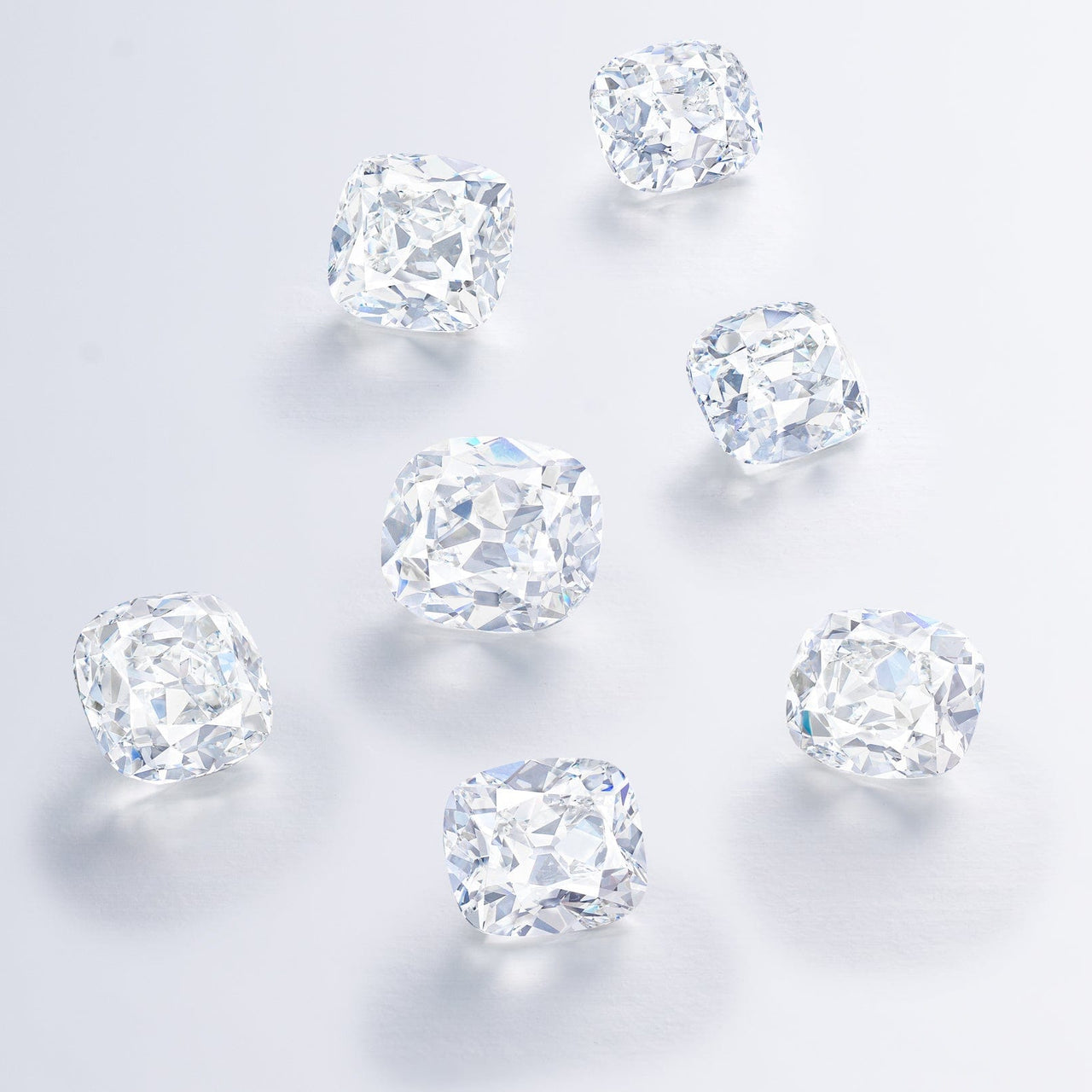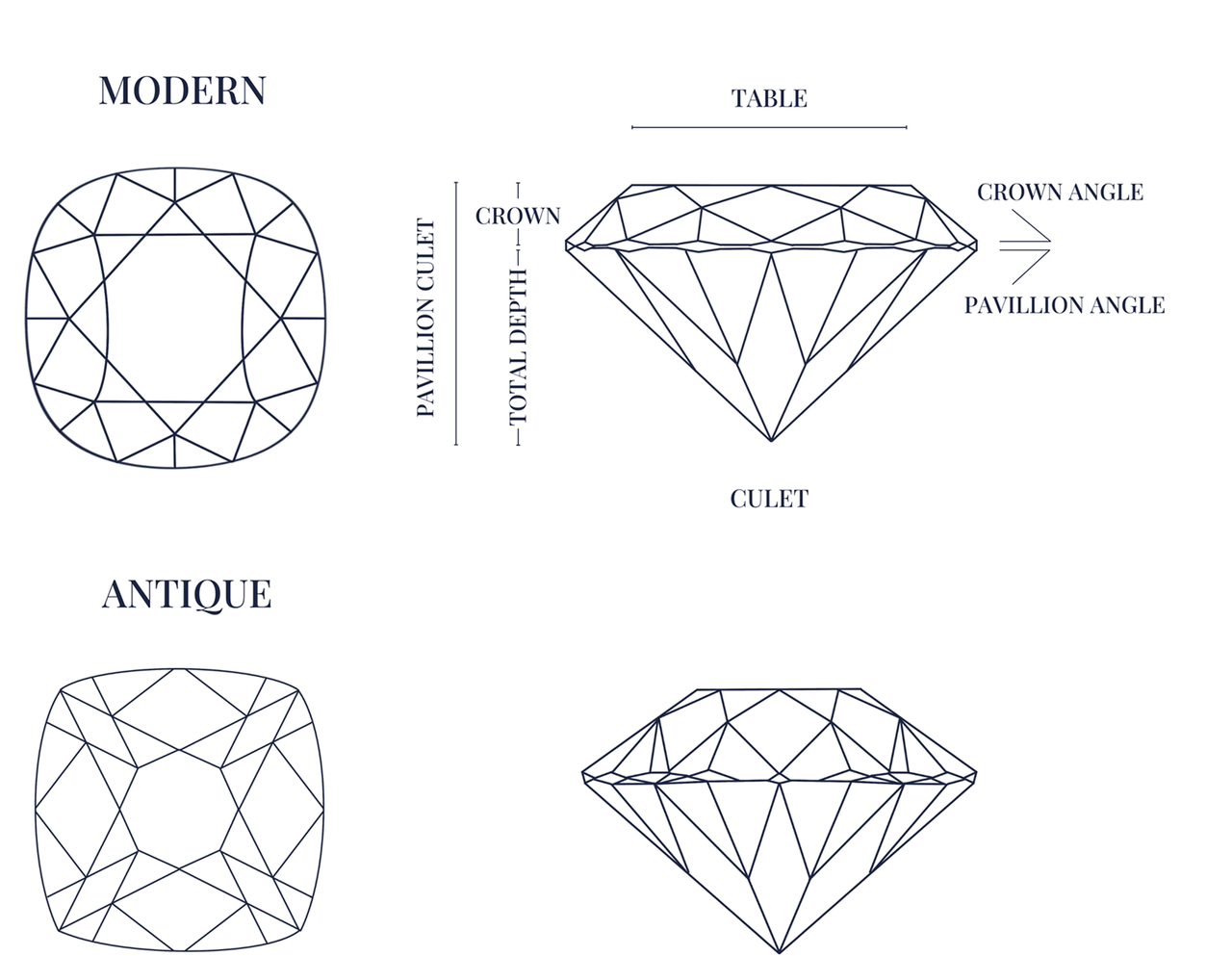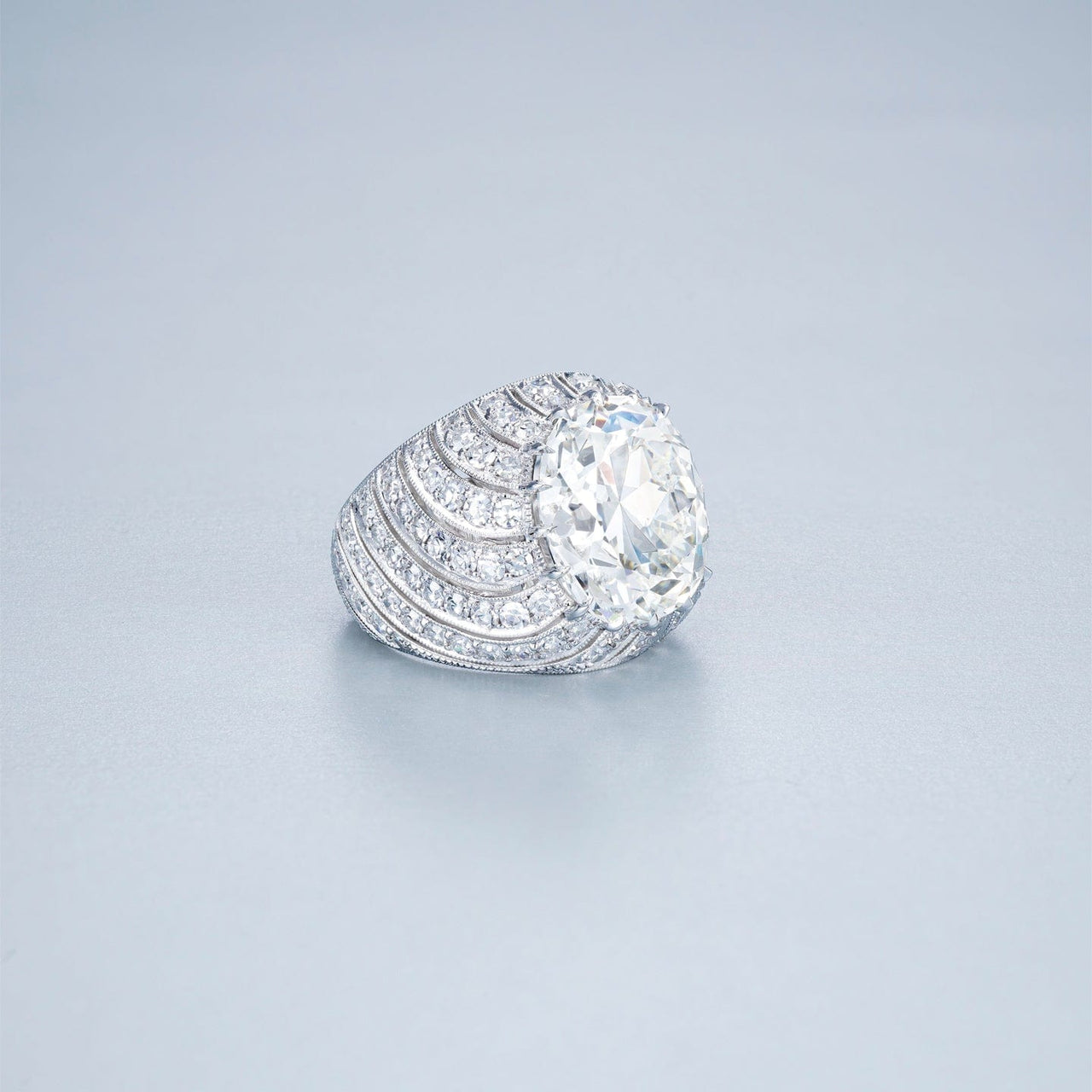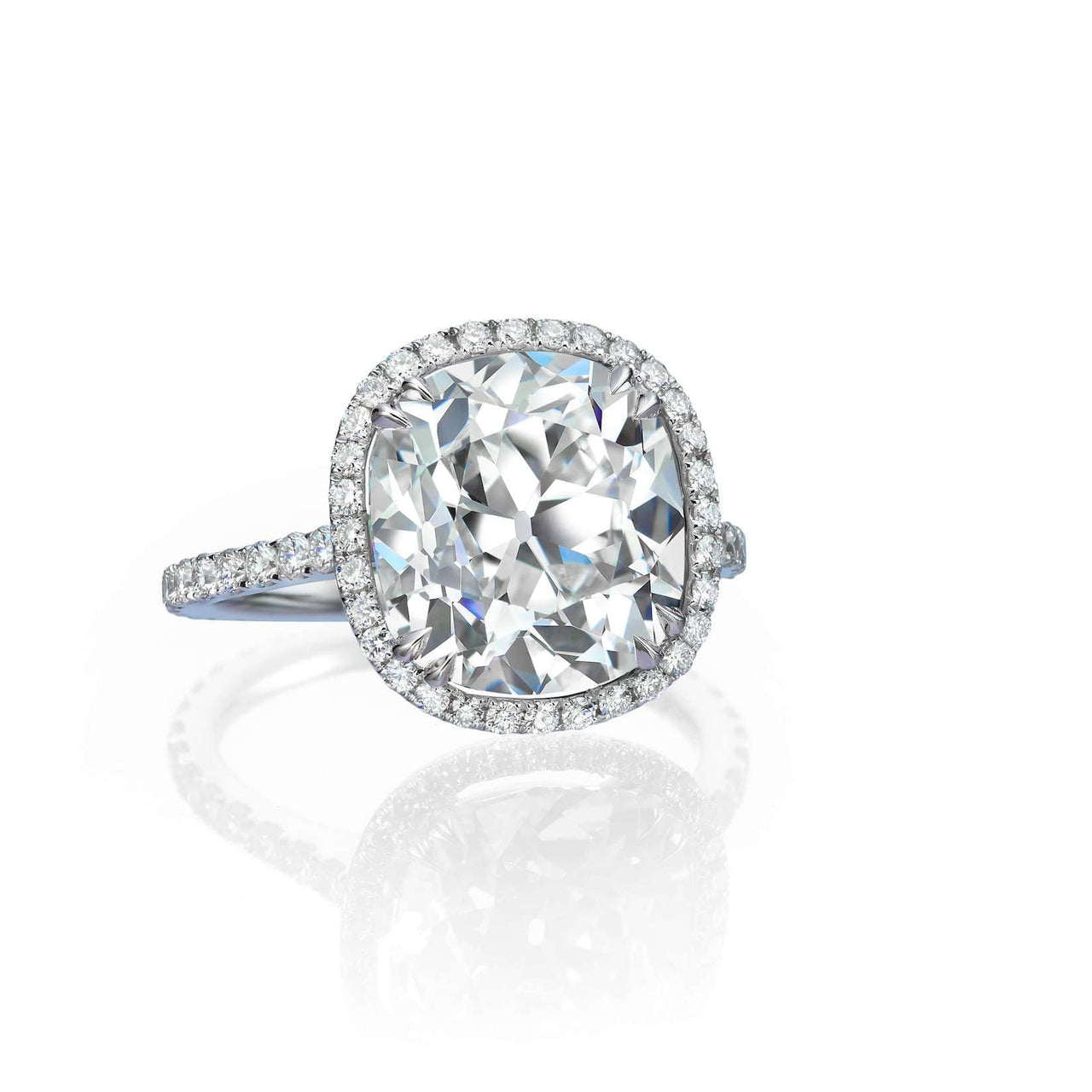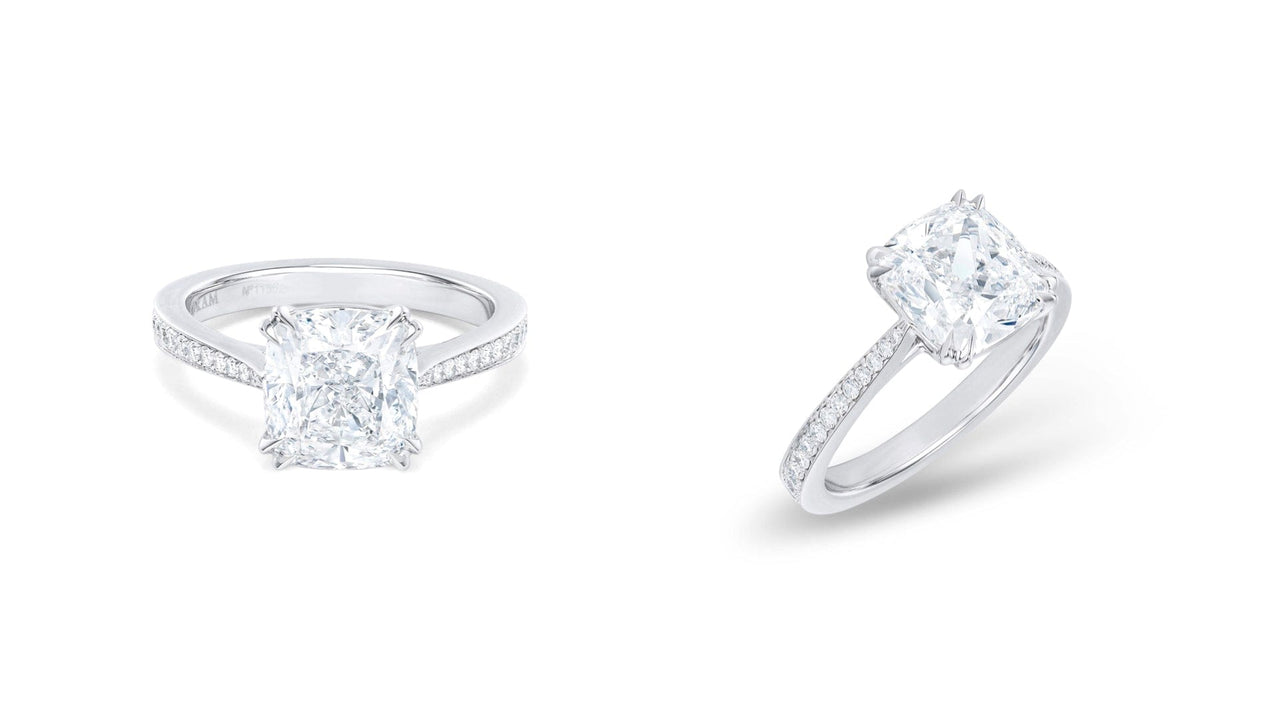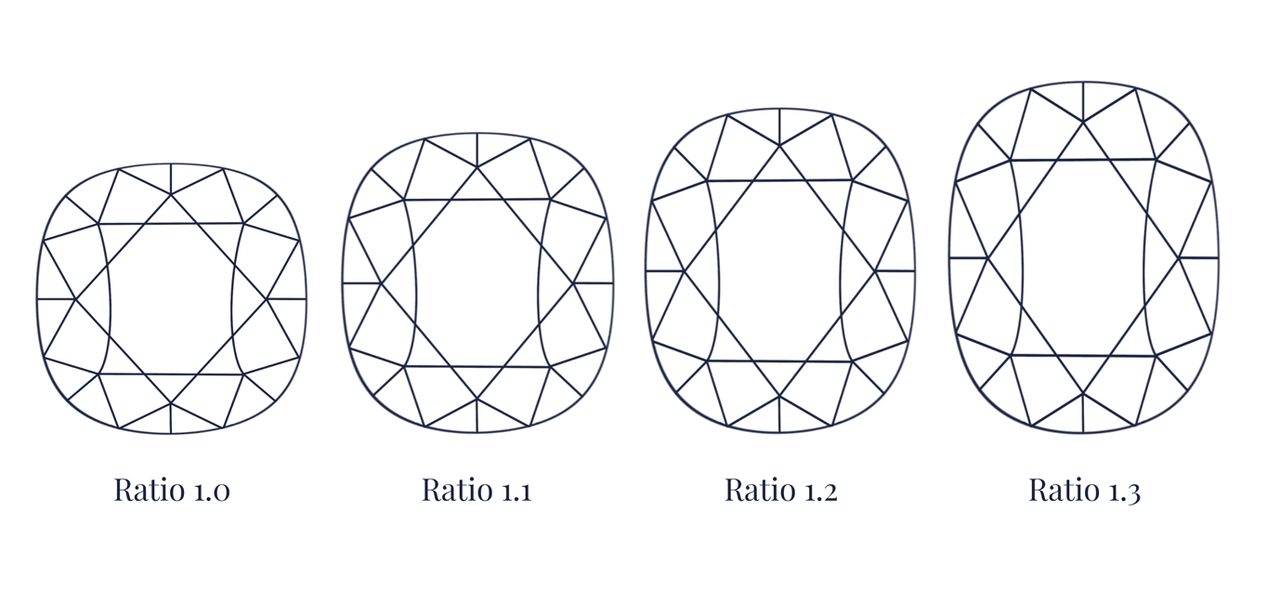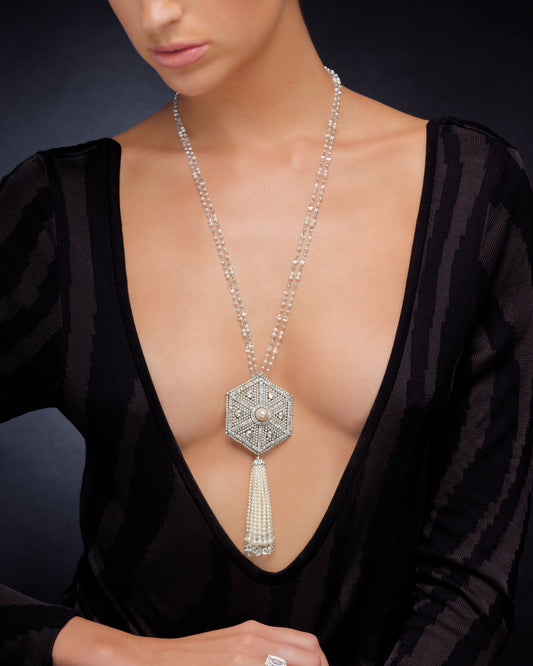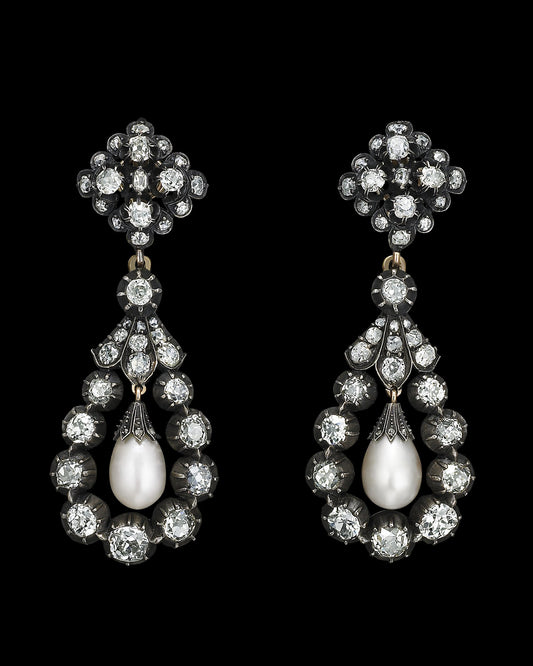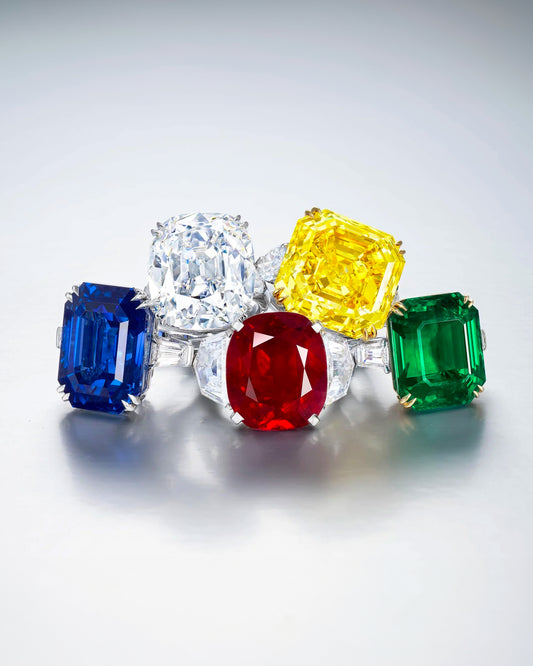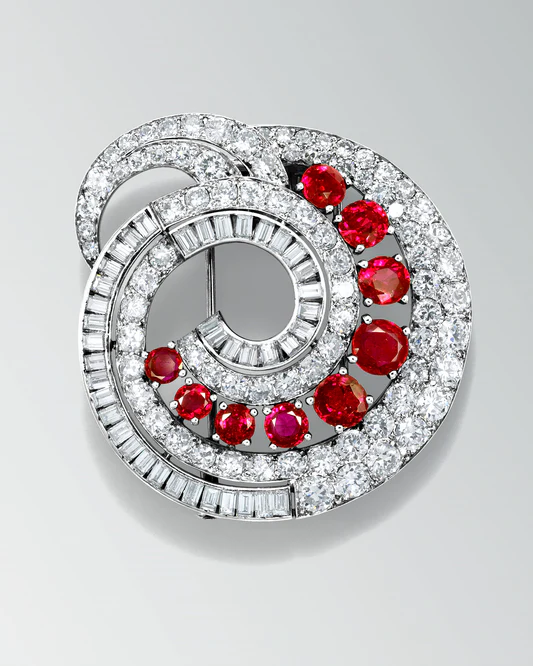
The Cushion Cut
At Ronald Abram, our favourite diamond cut is undoubtedly the cushion and it’s the shape we get asked about most. The cushion cut diamond sits at the intersection of history and technology. Whether your preference is antique or modern, square or elongated, it’s interesting to understand the history of these diamonds and how cutting methods have influenced the appearance of these stones.
The cushion cut is a beautiful and storied diamond that radiates charm and character. The name evokes an image of a sumptuous pile of luxury pillows with gentle, rounded corners. All cushion cut diamonds share the same curved silhouette feature. Their variation lies in their faceting and proportions, which distinguish an antique cushion cut diamond from a modern cushion cut diamond. While both cuts are desirable, each has a distinct way of interacting with light.
It's All In The Cut
In an antique cushion cut, there are slightly larger facets and the return of light is therefore seen in larger blocks, giving these stones a striking look evocative of romance and history. They were hand cut at a time before the invention of modern tools and technology, making it a slow and exacting process. The skill of the diamond cutter was in fashioning each facet around the ideals of a particular stone. As a result, these stones may have slightly more asymmetry, indicating the care and attention taken in their creation, and giving them a vintage feel.
In contrast, the beauty of a modern cushion cut diamond is achieved through the precision of computerised modern cutting techniques. These diamonds strive for technical perfection and are typically symmetrical and balanced. The result is a much different play of light. The narrower, angled facets create a needle-like pattern of light that has spectacular vibrancy and brilliance.
It’s difficult to describe an antique cushion cut. They are technically imperfect, but it’s those imperfections that make them unique.
History & Classification
The cushion cut has been popular for more than two centuries, and evolved from the old mine cut, that dates back to the 1700s. This early cut was designed to maximise the size of the stone achieved from the rough, which was important to the Indian maharajas, the earliest collectors of stones who wanted the largest diamond possible. These stones originated in the old mines of India, and when those mines were eventually depleted, production moved to Brazil. The cutting style attributed to the diamonds mined in India and Brazil then became known as, old mine referring to the origin of these diamonds.
Antique Cushion Cut
Today, antique cushion cut diamonds are categorised by the GIA(Gemological Institute of America) in two cutting styles: Old Mine Brilliant and Cushion Brilliant. However, the two classifications are generally indistinguishable, and the differences are very subtle. An old mine cut typically has a larger culet, or pointed bottom, a higher crown angle and smaller table than an antique cushion brilliant. Despite what their name suggests, a diamond classified as an old mine cut is not always older than the cushion brilliant. In order to determine whether it can be considered antique, you have to take into consideration the overall cutting style and proportions of the diamond rather than just rely on the GIA certificate.
Antique Cushion Cut Diamond Ring
Modern Cushion Cut
The modern cushion cut is a variation on the antique cushion cut, sharing a similar facet arrangement as the antique cut, but with a shallower depth and proportion. The modern stone’s cut maximises brilliance, giving the stone a scintillation and appearance similar to a modern round brilliant-cut diamond, but with the elegant pillow shape. The modern cushion cuts are also categorised by GIA according to two cutting styles: Cushion Brilliant and Cushion Modified Brilliant Cut. On a GIA certificate you may not notice the difference between an Antique Cushion Brilliant and a Modern Cushion Brilliant, but once in your hand, the way they interact with light will make the difference apparent. In the modified stones, the light is returned in a collection of more concentrated and smaller needles, creating the look of crushed ice.
Modern Cushion Cut Diamond Ring
Square vs Elongated
All cushion cut diamonds share an elegant silhouette in either a square or elongated appearance which we calculate in terms of a ratio. To find the ratio, divide the length by the width. For a square stone, where the length and width are equal the ratio would be 1:1. For more elongated stones the ratio will increase, for example a 1:1.15 and greater would be considered elongated. There are beautiful examples of both square and elongated stones. The longer stones tend to cover more of the finger and therefore feel larger, while square stones have symmetry in two directions. It’s really a matter of personal preference and setting style.
Antique cushion cut diamonds are considered the epitome of romance. Their soft, pillow-like shape and the way they interact with light both add to their timeless charm. Whether antique or modern, square or elongated, ultimately, what’s most important is how the diamond makes you feel, something only you can experience.

